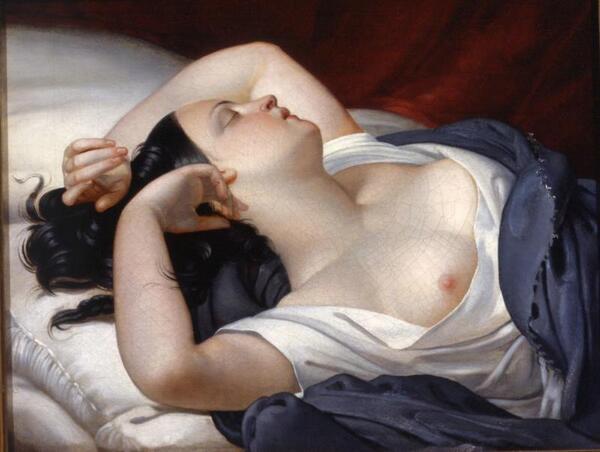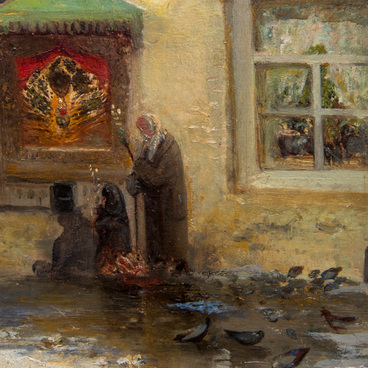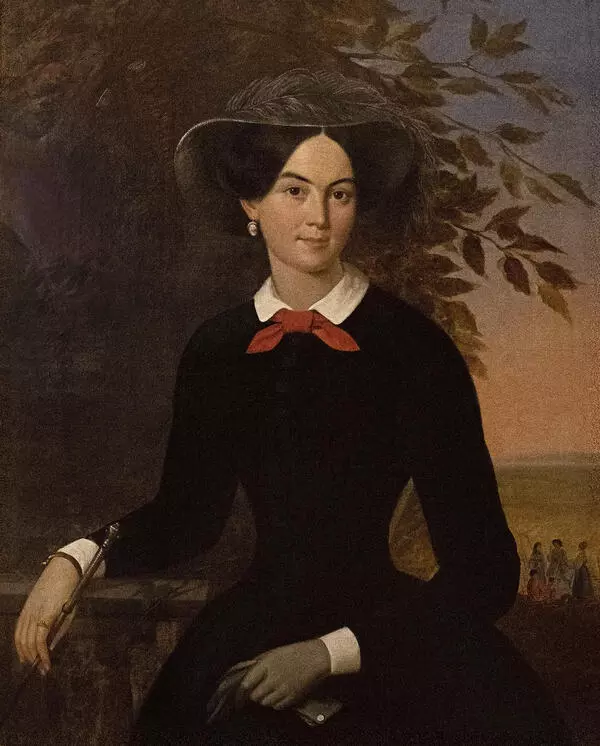Eugene Pluchart painted “Sleeping Italian Woman” in the mid-1840s. It represents the Biedermeier style which featured some elements of both Empire and Romanticism. This artistic movement offered viewers an illusion of everyday life, an understandable world with its own poetry, making them feel sufficient without excessive self-reflection.
Little is known about the life of Eugene Alexandrovich Pluchart, even though he was one of the most fashionable portraitists in Russia in the second third of the 19thcentury. He was born in St. Petersburg in 1809. Thanks to his father’s position as the director of the Senate Printing House, Eugene Pluchart was well received in high society and made a lot of acquaintances through his father and brother, the famous book publisher Adolphe Pluchart. Eugene Pluchart offered his services as a portraitist to a wide circle of acquaintances. He continued his studies in Europe, honed his painting skills in Italy and France, studied at the Academy of Arts in Munich, and returned to the Russian Empire in 1832. With his impeccable skills as a portraitist, he earned recognition at the exhibitions of the Imperial Academy of Arts.
The masterful technique, the depth of space, the way of shaping the volume of the face and body, and the exquisite use of light reflections falling from the draperies reveal the artist’s academic background. The model sleeps peacefully, and the painter offers the viewer to admire her perfect facial features, feminine arms, silky black hair, and delicate skin next to the glossy flowing fabric and realistically painted pillows. In this way, Eugene Pluchart conveys the feeling of “domestic paradise” that is very close, almost within reach.
As a rule, Eugene Pluchart embodied the principle
of art designed to be understood by ordinary people. In this painting, he also acts
as a kind of intermediary between high art and everyday life, responding to the
aesthetic preferences of the viewer. “Sleeping Italian Woman” enjoyed great
popularity, and Eugene Pluchart created many high-quality copies of this
painting. Two paintings completely identical to this one are kept in the State
Russian Museum in St. Petersburg and the Far Eastern Art Museum in Khabarovsk.




